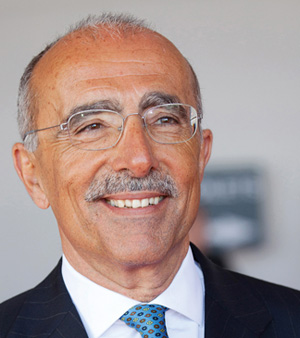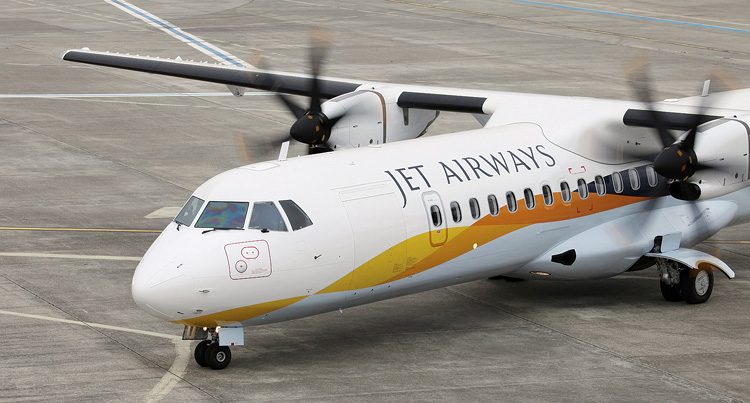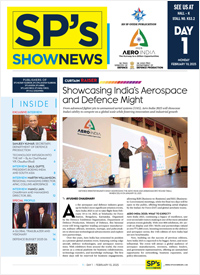- Prime Minister Narendra Modi inaugurates Aero India 2023 in Bengaluru; Releases Commemorative Stamp
- Defence Secretary meets delegations from Saudi Arabia, USA and Oman on the sidelines of Aero India 2023
- Foreign Ministers of 32 countries to attend Aero India 2023
- Embraer showcases the C-390 Millennium at Aero India 2023
‘India still has strong and untapped potential ahead’
Interview with Filippo Bagnato, CEO, ATR

SP’s ShowNews (SP’s): What are the reasons for the success of ATR ’s regional aircraft in India?
Filippo Bagnato (Bagnato): The development of the Indian economy in the few last years is strongly associated with the development of transportation, and new air services are bringing substantial increase of connectivity into regions that traditionally had low transportation infrastructures. In the context of economic growth and development of air networks across the country, ATRs perfectly match the Indian carriers’ requirements. ATRs have the lowest fuel, maintenance and operating costs among all regional aircraft. When compared to other turboprop aircraft on an average route of 240 nm, an ATR can help Indian carriers save about $1.2 million. This means that ATRs bring airlines the possibility of proposing optimised rates to an increasing number of passengers and continue developing regional networks. Also, ATRs have contributed in bringing regional air connectivity to small airfields with low levels of infrastructure or to tough runways. These outstanding operational performances are combined with high levels of passenger comfort inside the cabin, which has contributed to further increase in popularity of the ATRs across India. We have set up customer support facilities in India (one office in Bangalore and several representatives on the major Indian metros), so Indian carriers can rely on ATR’s knowledge and close presence.

SP’s: What is the potential of the regional aviation market in India over the next 25 years?
Bagnato: India, as one of the most dynamics markets in the world, has strongly contributed to the expansion of ATR in the recent years and has still strong and untapped potential ahead. We have today 60 aircraft flying across the country and we estimate that there is room for more than 200 additional ATRs in the coming years.
SP’s: What steps has ATR taken or is contemplating to take in order to retain its dominant position in India?
Bagnato: The ATR largely remains the most popular regional aircraft in India, and is highly appreciated by passengers. There are 60 ATRs versus 15 Q400s in the country. Also, we have five operators across the country, while Bombardier has one. We have been the first aircraft manufacturer to have in the country, since 2006, a fully dedicated customer support centre to help the airlines operations. To retain our position in the market and even increase it, we are constantly improving our products and our services in terms of latest technology and cost-effective solutions. Our new ATR-600 series aircraft-certified and being delivered since last year-is today the most updated and technologically advanced aircraft, both from a passenger and pilot point of views. Their new standard PW127M engines bring increased performances in hot and high environments, and the aircraft continues to feature the lowest operating costs of the market. Because of these reasons, we are convinced that we are optimally positioned to keep ATR as the preferred option for Indian regional operations.
SP’s: What is the economics of operating ATR aircraft for domestic air cargo segment of the airline industry?
Bagnato: ATR’s success extends through several cargo operations worldwide by major companies such as DHL, FEDEX and UPS, and in India, with Deccan 360 and Quikjet, underlining the strong residual value of the ATR aircraft for cargo operations. As for passenger operations, ATRs bring substantial savings in operating and maintenance costs. And, at the same time, ATR’s fuselage structure enables that no specific loader is required to upload or download the aircraft, making it more attractive and viable for smaller airports with low levels of service and infrastructures.
SP’s: What is the state of MRO facilities in India for ATR aircraft operating in India as well as in the region?
Bagnato: Since its introduction in the country, ATR has acted as a partner of the airlines. We helped a majority of them develop their own maintenance capabilities; as a result you have today in this region very experienced aircraft engineers. With ATR fleet size that doubled in the past five years and with the launch of low-cost carriers, there has also been a need to develop MRO capabilities outside the airlines. For this reason we have supported the initiative of Indian private companies that have today state-of-the-art components repair facilities and airframe MROs, approved by the Indian DGCA as well as by the European EASA. This allow airlines to greatly reduce their costs by outsourcing and performing their airframe and components maintenance locally





